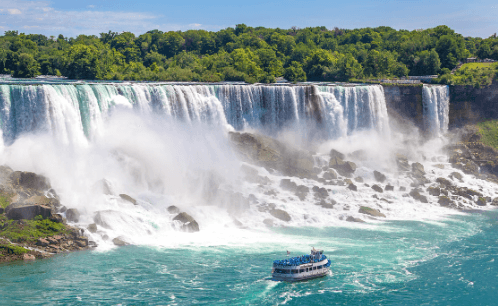
Ecotourism: Sustainable Travel for Communities & Nature
What is ecotourism? If you feel unsure if your « eco-friendly » travel choices actually protect nature or just fund clever marketing, you’re not alone! This article cuts through the greenwashing noise to reveal the real ecotourism meaning – from sustainable tourism principles to community benefits that outlast your trip. We’ll show you, through numerous examples, how nature-based tourism can protect natural areas while avoiding the pitfalls that turn good intentions into environmental harm. Spoiler: it’s more than just planting trees at resorts 🌍
Article Takeaways
According to TIES ecotourism definition is, in brief, responsible travel to natural areas that supports conservation, benefits local communities, and promotes environmental education. It funds protected areas, creates sustainable jobs, and encourages cultural preservation. Unlike mass tourism, it emphasizes low-impact, meaningful experiences. Real-world ecotourism examples show ecotourism’s power to drive both ecological and economic resilience. To avoid greenwashing, travelers should choose certified and transparent operators.
Table of contents
- Understanding Ecotourism: Principles and Definitions
- Benefits of Ecotourism: People, Planet and Prosperity 🌱
- Ecotourism in Practice: Real-World Examples and Activities 🌍
- Challenges and Future of Ecotourism: Finding the Balance 🌊

Understanding Ecotourism: Principles and Definitions
What Defines True Ecotourism
Ecotourism means traveling responsibly in natural areas. 🌿 It protects the environment and improves local communities’ well-being. The International Ecotourism Society (TIES) defines it as « travel that supports conservation while benefiting residents ». Unlike regular tourism, it focuses on education and minimazing impact. This approach matters now more than ever, as travelers seek ways to explore without harming ecosystems or cultures. 🌍 TIES ecotourism definition is probably the best and the easiest ecotourism definition to keep in mind.
Real ecotourism follows clear principles: conservation, community benefits, and environmental education. 🌱 It funds protected areas, empowers local people, and teaches visitors about nature. In order to spot the best ecotourism activities in an area, look for Global Sustainable Tourism Council (GSTC) criteria to detect genuine programs. Also, avoid vague « eco » claims – true operations show measurable results like habitat restoration or job creation. And, in addition, always ask how tourism revenue directly supports conservation and local growth.
The Evolution of Nature-Based Tourism
Ecotourism evolved from simple nature travel to a structured conservation tool. 🌳 In the 1990s, TIES formalized its principles. Early conservation efforts like Mongolia’s Bogd Khan Mountain protection (1681) laid groundwork. Today, it combines wildlife preservation with community ownership, transforming how we travel in natural spaces.
While sustainable tourism covers all travel types, ecotourism specializes in nature-based experiences. 🌏 It focuses on biodiversity hotspots and cultural preservation. Responsible travel shares similar values but applies them broadly. Therefore, you should think of ecotourism as specialized « nature medicine » – targeted solutions for fragile ecosystems and communities, unlike general wellness approaches of broader sustainable tourism.
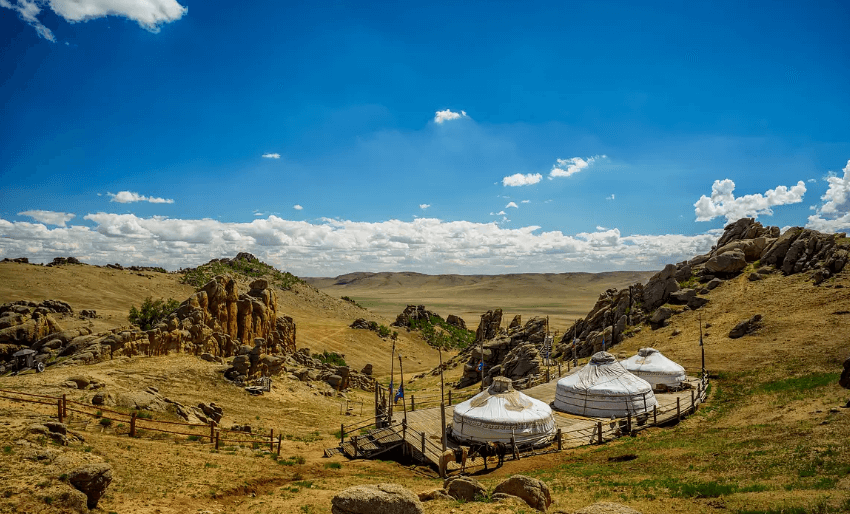
Benefits of Ecotourism: People, Planet and Prosperity 🌱
Environmental Conservation Success Stories
Ecotourism funds conservation through responsible travel. Most of times, revenue from park fees and guided tours directly supports protected areas. Whatsmore, operators adopt sustainable measures in these locations, such as solar power and waste reduction, minimizing environmental harm while setting industry standards for nature-based tourism. Travelers then become advocates after experiencing ecosystems firsthand, pushing for stronger environmental policies and protecting biodiversity hotspots globally. 🌿 We can thus note the positive consequences common to areas dedicated to ecotourism:
- Direct funding: Park fees and guided tours finance habitat protection and endangered species conservation.
- Travelers become conservation champions after experiencing ecosystems directly.
- Deterrence of illegal activities: Increased presence from ecotourism reduces poaching and deforestation.
- Sustainable practices implementations: Operators use renewable energy and waste reduction to set eco-friendly benchmarks.
- Community engagement: Reinvested revenue improves local infrastructure and education about environmental stewardship.
Travel money creates financial reasons to preserve nature instead of exploiting it. For instance, in Ecuador’s Cuyabeno Reserve, tourism generates significant income for indigenous communities, and revenue from eco-lodges funds wildlife corridors in Brazil’s Pantanal and protects 80% of Palau’s waters. These models shows how living ecosystems can outvalue short-term resource extraction economically. 🌍
Empowering Local Communities
Ecotourism creates jobs like wildlife guides, artisans, and homestay hosts. In Sabah, Malaysia, youth launched eco-treks that boosted local economies while preserving forests. These roles provide stable income without depleting natural resources, and communities gain economic power by selling handmade crafts and leading nature tours, turning conservation into a livelihood. 🌱
Mexico’s Oaxaca and Chiapas regions prove community-led ecotourism works. Locals manage tours while sharing their traditions, and reinvest profits into schools and healthcare. Malaysia’s homestay programs improved rural livelihoods while protecting forests. Success hinges on fair profit-sharing, local governance, and balancing tourism with traditional practices. This approach empowers communities to control their economic future while safeguarding culture and nature. 🌳
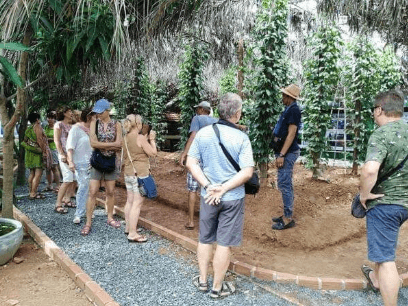
Educational Value for Travelers
Another major benefit of this alternative tourism is that travelers learn about biodiversity, climate challenges, and cultural preservation through hands-on experiences. Guided tours teach ecosystem interdependence, while village stays reveal sustainable living. This education sparks behavior changes, like reducing single-use plastics or supporting conservation charities. Ecotourism turns sightseeing into meaningful learning. 🌏
Encounters in natural settings create global environmental advocates. Some studies show that visitors to Rwanda’s gorilla treks often fund anti-poaching efforts. These experiences bridge cultural gaps, proving that shared environmental values unite people across borders. 🌐
Economic Benefits Beyond Tourism
Local economies thrive through artisan crafts, organic farming, and cultural workshops funded by ecotourism. In addition, homestays channel revenue into community development, and traditional skills like weaving or boat-building gain new markets. These ripple effects create jobs that outlast tourism seasons while preserving heritage. 🧵
Ecotourism builds economic resilience by diversifying income sources. Sabah’s Community Adoption Programme linked eco-tourism with sustainable agriculture, creating year-round jobs in remote areas. The consequence is that seasonal tourism challenges fade when communities combine guided hikes with handicraft sales and conservation work. This approach stabilizes income while protecting natural assets that attract visitors long-term. 📈

Ecotourism in Practice: Real-World Examples and Activities 🌍
To define ecotourism, and to illustrate in real what does ecotourism mean, let’s go through some examples!
Sustainable Accommodation Models
Eco-lodges blend nature with comfort. 🏕️ Most of them use renewable energy, local materials, and generate activity for local communities. Bambu Indah in Bali shows this with bamboo architecture and permaculture. This type of eco-conscious stays allow to cut carbon footprints by nearly 50% and prove that sustainability and comfort aren’t enemies in travel. ☀️
Good eco-stays do more than reduce footprints – they protect nature and develop alternative solutions to technology and create a circle of virtuous solutions. Mhondoro Safari Lodge in South Africa uses natural bacteria to clean water, while employing locals and funding conservation. Guests get authentic experiences while helping ecosystems. This connects lodging to the bigger picture of protecting special places. 🌿
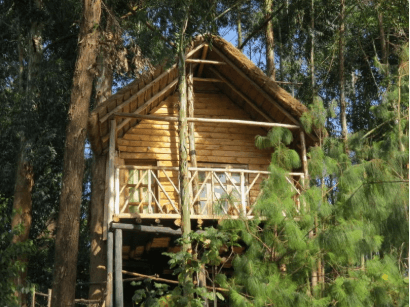
Wildlife Conservation Tourism
True wildlife experiences prioritize animal well-being over selfies. 🐾 They follow natural pace, local rules, keep distance, and avoid feeding animals. Ethical operators work with biologists and follow nature related regulations like the Marine Mammal Protection Act. These tours protect ecosystems while offering memorable and authentic wildlife moments. Among nature immersion experiences, the activities below are the most representative of tourism committed to the conservation of natural environments:
- Rwanda’s Gorilla Guardians: Gorilla trekking funds anti-poaching and habitat restoration in Volcanoes National Park.
- Palau’s Marine Sanctuary: Visitor fees protect 80% of Palau’s waters and marine biodiversity.
- Brazil’s Jaguar Corridor: Local guides use camera traps to track jaguars while protecting wetland habitats.
- Costa Rica’s Osa Peninsula: Eco-lodges fund 2.5% of global biodiversity through sustainable tourism revenue.
- Australia’s Reef Restoration: Visitor contributions fund coral rehabilitation on the Great Barrier Reef.
Wildlife tourism makes nature valuable alive, not dead. And this is probably the best definition of ecotourism. 🐘 In Rwanda, 80% of tourism revenue funds infrastructure and education. One more time, this creates jobs while protecting habitats. And visitors benefit indirectly as when communities profit from living wildlife, they become conservation allies rather than poaching participants. It’s about showing wildlife’s economic value in its natural state.
Cultural Immersion Experiences
Eco-travel also connects nature and culture. 🏞️ It respects traditions while creating fair opportunities. Authentic experiences involve communities in decision-making and economic benefits. This protects heritage while offering travelers meaningful connections beyond typical tourist routines.
A great real world definition of eco tourism is the case of Watamu village in Kenya. It shows cultural tourism done right. Locals guide marine tours while preserving and sharing their traditions. Then, revenue funds education and infrastructure. Similar programs in Vietnam’s Duong Lam village teach visitors rice cake making and traditional crafts. These experiences maintain cultural pride while building economic resilience through responsible travel. 🌏

Challenges and Future of Ecotourism: Finding the Balance 🌊
Addressing Greenwashing in the Industry
Eco-claims often mislead well-meaning travelers. 🌿 Some companies highlight solar panels while ignoring waste practices. To go deeper in good practices, the GSTC criteria help spot real efforts—look for measurable outcomes like habitat restoration. Less than 1% of hotels meet genuine sustainability standards, making certifications important for honest ecotourism. Travelers must question vague “eco” promises. 🌍
Certifications like Green Globe and The International Ecotourism Society (TIES) build trust. 🌱 Verified audits every two years ensure hotels actually cut emissions. Some projects are in the pipes to allow technology like blockchain to track environmental impacts. But, in any case, Education and awareness remains key—knowing which certifications matter helps avoid greenwashing traps. 🌐
Managing Tourism Growth Sustainably
More travelers want eco-trips, but overcrowding threatens fragile areas. 🌿 To avoid mass tourism, Komodo National Park raised entry fees to limit visitors, funding conservation. Successful destinations balance access with protection. Strictly banning single-use plastics and rotating trails keeps ecosystems healthy. All is in the hands of local communities, which must control visitor numbers to prevent nature over-exploitation. 🌳
Smart management stops nature from becoming another casualty. 🌊 In Africa, Kenya’s Maasai Mara uses GPS tagging to monitor wildlife stress and seasonal pricing spreads visitors—higher fees during peak times. Community-run visitor centers train locals as guides, ensuring tourism supports conservation. These tactics keep natural areas thriving despite growing interest. 🌍
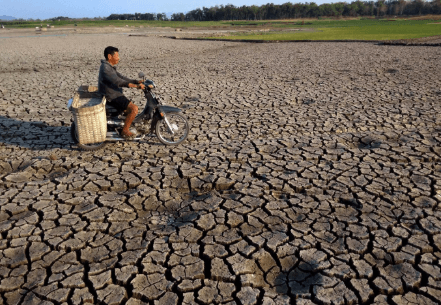
The Future of Ecotourism in a Changing Climate
Climate change threatens ecotourism’s foundation. 🌍 Warmer seas bleach coral reefs, and droughts shrink Costa Rica’s rainforests. In response, some operators are trying to take initiatives, like supporting mangroves plantations to absorb carbon and installing solar-powered lodges. In Rwanda, gorilla treks now fund firebreaks against longer dry seasons. Climate resilience means adapting without sacrificing sustainability. 🌿
Ecotourism can fight climate change by protecting carbon sinks. 🌳 A great example is the one of Osa Peninsula, in Costa Rica, where guides plant 100+ trees annually. Also, Palau’s marine reserves act as carbon-storing blue ecosystems. This is why travelers who fund these projects turn vacations into climate action. By linking tourism revenue to reforestation, ecotourism becomes part of the solution, not just a climate victim. 🌍
Ecotourism isn’t just a trend—it’s a lifeline 🌍 for ecosystems and communities. Prioritize certified operators to protect nature 🌱 while supporting local economies. The future of travel? Choices that turn trips into conservation wins—before « last chance » destinations fade from our maps. 🌿
Q / A About Ecotourism Definition
What are the drawbacks of ecotourism?
Well, ecotourism isn’t all sunshine and rainbows 🌈. It can be a bit rough around the edges, comfort-wise. It’s geared more towards adventurers and nature lovers, not folks expecting luxury hotels. So, if you’re not one for braving the elements, it might not be your cup of tea for now. However, keep the hope, as luxury tourism is developing ecotourism options for the next future.
Also, if it’s not managed properly, ecotourism can actually harm the flora and fauna. Mass tourism in fragile areas can overwhelm ecosystems, leading to irreversible damage. Plus, it’s not just about the warm fuzzies for the locals; you’ve got to consider the social implications too. Not everyone benefits equally, and you need community consensus for it to really work.
Where is ecotourism most popular?
Ecotourism is booming in places like Costa Rica, a real pioneer since the ’70s, with a quarter of its land protected. Then there’s Ecuador, with its Amazon rainforest and Galapagos Islands, perfect for bird watching and hiking. And don’t forget Belize, boasting tropical forests and the world’s second-largest coral reef. These spots are all about nature and local culture.
You’ll also find great ecotourism in Australia, with its diverse ecosystems, and New Zealand, offering rainforests, glaciers, and volcanoes. Even Canada, with its vast wilderness, is a hotspot. So, if you’re looking for an eco-adventure, these are some top-notch destinations to consider as they are real ecotourism meaning illustrations.
How does ecotourism differ from sustainable tourism?
Sustainable tourism is like the big umbrella, aiming to minimize tourism’s negative impacts on the environment, society, and the economy. It’s all about benefiting local communities and future generations. On the other hand, what is defining ecotourism is a more focused approach, zeroing in on protecting the environment and preserving local cultures.
Think of ecotourism as a specialized subset. It’s about visiting natural sites and rural areas while being super respectful of the environment. The goal is to encourage travelers to discover ecosystems, animals, and cultures while minimizing their footprint. So, while sustainable tourism is broad, ecotourism is nature and culture-centric. 🌱
How to measure the real impact of an ecotourism trip?
Measuring the real impact of an ecotourism trip means looking at the environmental, social, and economic aspects. For the environment, you can measure greenhouse gas emissions from travel, accommodation, and activities. Water and electricity consumption per tourist are also good indicators, along with the amount of waste generated.
On the social side, it’s important to measure the satisfaction of locals, tourism employees, and visitors. The number of professionals trained in sustainable development is a sign of local engagement. Economically, you’ll want to assess the direct and indirect economic benefits to the area, like job creation and contributions to local development. It’s a holistic approach, really. 📈
What are the risks of ecotourism for local communities?
Ecotourism, though often seen as a sustainable option, can pose risks to local communities. One big risk is the takeover of land and natural resources by tourism companies. Developing tourist infrastructure can displace locals and lead to the loss of farmland or traditional fishing areas. Plus, increased demand for water and energy can strain local resources.
Another risk is the commercialization of local culture. Communities might be pushed to change their traditions to meet tourist expectations, leading to a loss of authenticity. Ecotourism can also create an over-reliance on tourism, making communities vulnerable to market fluctuations. It’s a balancing act, and it’s important to protect local communities. 🌳
How to choose a certified ecotourism agency?
To pick a certified ecotourism agency, look for recognized labels and certifications in sustainable tourism. These labels ensure the agency meets specific environmental, social, and economic criteria. Check for certifications like ATR (Agir pour un Tourisme Responsable), Green Globe, or labels like the European Ecolabel.
Also, verify the agency’s commitments. They should minimize their environmental impact, support local communities, be transparent about their practices and share their own definition of ecotourism. Check online reviews and testimonials to see what other travelers have experienced. Doing your homework ensures you’re supporting a truly responsible agency. 🌐
